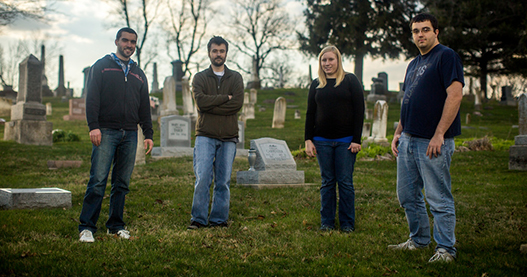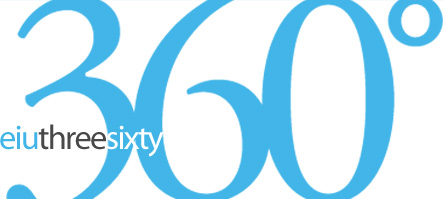
Students Alex Gillespie and Amy Wywialowski spent their Saturdays not with the living, but among the dead.
As part of a class project, they traveled from cemetery to cemetery in east central Illinois, digging into Charleston’s past and searching for the tombstones of those involved in the Charleston Riot.
The riot was a local historical clash between Union soldiers and Copperheads during the Civil War that resulted in nine dead and 12 wounded.
“We traveled all over the tri-county area to try and find these tombstones,” said Gillespie, a history graduate student.
The duo ventured into abandoned cemeteries with sometimes only a sole marker to guide them. Other times they would stumble upon a massive commemorative headstone.
History professor Debra Reid said the purpose of the project was for the students to investigate how our society remembers the Charleston Riot.
Community members celebrated the 150th anniversary of the Charleston Riot in March, with a three-day event with re-enactments, lectures and a play. Gov. Pat Quinn even declared the celebration from March 28-30 as “Charleston Riot Days.”
Reid created the class assignment for students in her “Public History: Meaning and Method” course because she felt researching the Charleston Riot fit in perfectly with the local celebration.
“Here we were with the 150th anniversary of an event that is controversial, has national significance, and it happened right here in Charleston,” Reid said. “How could we not do a project on it?”
The cemeteries searched by Gillespie and Wywialowski, an independent study student, were only a small part of the project, and the class, including students Michael Ludwinski and Alexander Scalise, who spent hours researching in the library about how our society remembers the riot.
“The purpose of the class was to introduce students to public history.” Reid said. “Public history being the process which ordinary, everyday people selectively forget, selectively remember and construct the past.”
Throughout their research, the students looked at many newspapers such as The Daily Eastern News, Charleston Times-Courier and the Chicago Tribune.
They also looked into what items the community produced about the riots such as markers and pamphlets, and they also found secondary sources, written by historians, said Scalise, a senior history major.

Some of the accounts they read even included EIU historical figure Charles Coleman’s own handwritten notes about the riot.
“We dealt with the how was it remembered and we tried to create a story from that,” Scalise said.
One of the first individuals to talk about the public memory of the riot was a teacher who wrote a journal for her history students, he said. Then, for the 100th anniversary of the riot, the city of Charleston hosted a re-enactment in 1964, then another re-enactment in 1967.
After the first re-enactments, the commemoration of the riot became part of larger celebrations such as Fourth of July and the anniversary of Illinois, Scalise said.
When our community hosts festivals and reenactments commemorating the riot, Scalise said, they are paying tribute to the Union soldiers, not the Copperheads.
“By calling the event a riot, it shows that the Republicans were heroic and standing up for their country,” Scalise said. “It makes it more meaningful, more dramatic.”
The re-enactments show the difference between political ideologies at the time with the Copperheads wanting immediate peace with the South, and the Republicans supporting the end of slavery.
While the students researched how society remembers the riot, they also reached out to local descendants of participants in the riot, and tried to make sense of the contradicting news articles and personal accounts of the riot.
“When I started, I thought I had a handle of who started it, but I am walking away with less of a clue because I read so many articles with different viewpoints,” Wywialowski said.
For example, Wywialowski said one article stated a participant, John Cooper, died escaping from the riot, while his grave tombstone said he died in the riot. The newspapers also spelled a lot of names wrong, which made researching the riot even harder, and a lot of individuals inserted their own bias into the research.
“Dealing with local history, you get a lot of people who want to believe things happened a certain way,” Wywialowsi said.
The four students gathered their research, and synthesized it into an exhibit to display in Booth Library at EIU and the Charleston Carnegie Public Library.
They also presented their research and exhibit at the Dudley House in Charleston last December. Their exhibit is titled “Seven Score and Ten Years Ago: The Stories and Memories of the Charleston Riot.”
Even though the class ended in December, the students are still presenting their findings, and took part in a panel at the Illinois History Symposium at EIU. The students even received an award through the Illinois Historical Society in April.
“This is exactly what life is supposed to be, not dropping it once you walk out of the classroom,” Reid said. “The class ended, it’s over, but our students keep going.”









